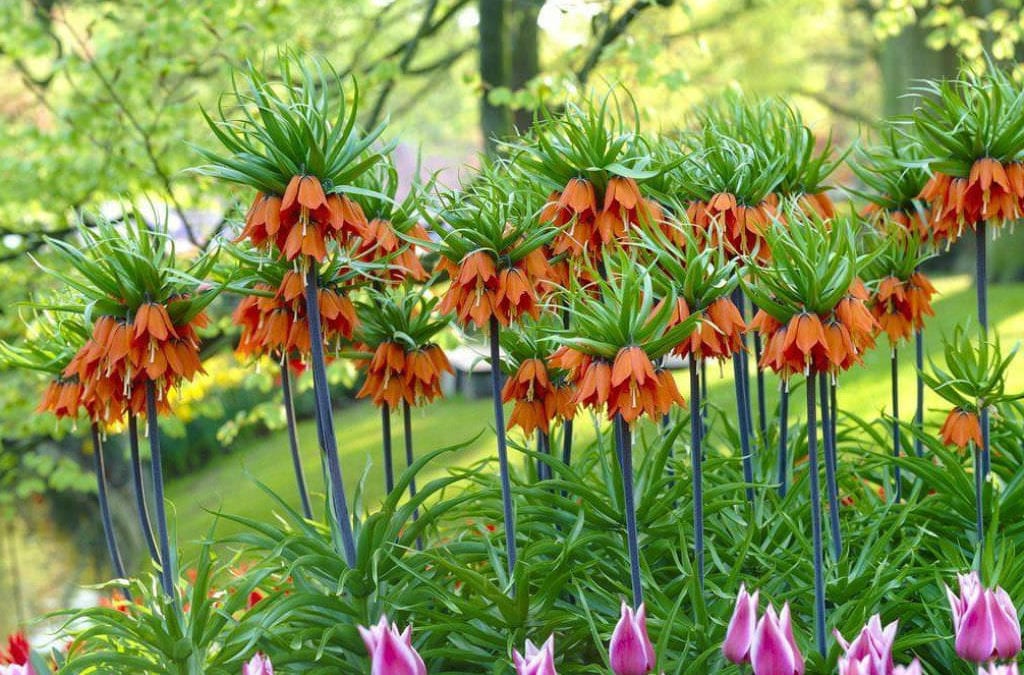Do you have questions when it comes to fall bulbs? What are they, and how and when do I plant them are things that gardeners ask. Planting bulbs is simple and rewarding, especially when the shoots emerge after a long winter. And even though putting in plants that won’t bloom for months might seem like a lot of work, you’ll be rewarded as spring blooming bulbs are the true harbingers of warmer weather and each type has a unique beauty.
We can all agree that tulips and daffodils are beautiful, but every fall our staff likes to experiment with something different. This fall, lots of us are looking at Allium, those showy ornamental onions. ‘Gladiator’ is a common choice and it’s hard to miss the big-as-your-head flowers, Take a gander at ‘Drumsticks’. This deep magenta, egg-shaped flower head will attract a lot of attention from passersby. We also love the sweetly scented ‘Purple Suze’, a favorite of pollinating insects like bees and butterflies.
Frittilarias are another less commonly utilized spring flowering bulb. Fritt bulbs can smell a bit funky, but the end result is so worth the slight odor. The flowers of the different species can vary wildly in color and form, but the most spectacular is the Crown Imperial. The flowers bloom in shades of bright golden-yellow or a rockin’ red-orange, and will make your jaw drop each and every spring.
Camassia, or Quamash, is native to the western United States and a member of the asparagus family. Meriwether Lewis spotted vast blooming stands of the soft blue flowers on that famous exploratory journey of Lewis and Clark to the Pacific Ocean. Since it is a prairie plant, Camassia prefers good drainage and can tolerate a bit of shade. Plant them in big drifts under some birch or oak trees.
Of course, celebrating these less commonly planted bulbs doesn’t mean that we have given up on those tulips. Those of us who are combating deer are looking to the deer resistant species tulips like the soft pink of ‘Lilac Wonder’ or the bright violet of ‘Persian Pearl’.
As far as planting is concerned, remember that bulbs should be planted with the pointed end up. If there is no obvious pointed end, don’t panic. Most are very forgiving about planting orientation. If in doubt, place the bulb on its side, and it will figure out which way is up. There is also a rule of thumb for figuring out planting depth. Dig your holes 3-4 times the height of the bulb. This means that large bulbs get planted deeper than small ones. You can also layer some small types above larger bulbs in the same hole.
Many gardeners ask about fertilizing. Applying fertilizer will enhance the size and color of your flowers and prolong the bulb’s lifespan. At planting time, mix the fertilizer into the bottom of the planting hole. For established bulbs, work it into the ground around the bulbs in early spring.
Now that you know how to plant bulbs, you can really have fun choosing which ones to plant. All bulbs are divided into categories of bloom time; early spring, mid spring, and late spring. If you want a succession of bloom throughout the spring, plant some from each category. If you want one big show of color, choose bulbs that are all from the same group.

